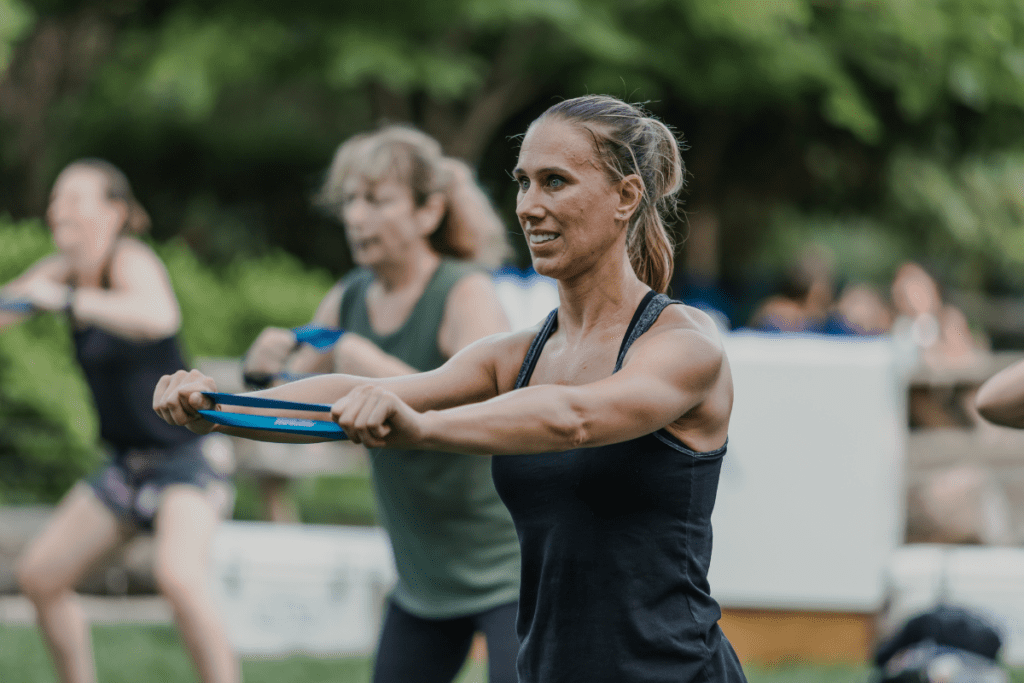Here’s What Your Sweat Can Reveal About Your Health
When you hear the word sweat, you probably think, “gross!” But those stains on your clothes after a workout are more than just a yucky side effect of exercise.
“Sweat is the body’s natural process of cooling itself. It allows for regulation of temperature and elimination of harmful toxins such as heavy metals, pesticides, plastics, and stored chemicals like cadmium and mercury,” said Lee Braun, Co-Founder and CEO of Perspire Sauna Studio.
Today, we’re constantly exposed to toxicities, including polluted air and the laundry list of mystery ingredients that appear in our food and drink products. It’s more essential than ever to sweat on a frequent basis.
“A good rule of thumb is to provide your body with at least three to four hours of active movement per week,” said Braun. “It’s also beneficial to incorporate regular use of a wellness practice like infrared sauna to induce a deep sweat for optimal health.”
Sweat, also called perspiration, also aids in increased metabolism, better quality sleep, improved skin appearance, stress relief and boosting immunity.

Types of sweat
If you are a regular gym-goer, you are probably familiar with eccrine sweat, often referred to as common sweat. Eccrine sweat glands are found in almost all areas of the skin and produce a lightweight, odorous sweat.
“Eccrine sweat is what your body produces when you’re working out, laying by the pool on a hot summer day, or sitting in an infrared sauna,” said Braun.
The other type of sweat is known as apocrine, or stress sweat. Apocrine glands are in the hair follicles around your groin, armpits and scalp. They kick in during high levels of stress. This type of sweat often appears and feels thicker because it contains fat and proteins. These combine with the bacteria on your skin and result in body odor.
So next time your boss assigns you a high-pressure project with an insane deadline, take a deep breath and relax so you don’t become known as the smelly one in the office!
What your sweat says about your health
Beyond the differences in eccrine and apocrine sweat, our body’s natural coolant can tell us a lot about our health.
You’ve probably been in a fitness class before and wondered why the guy spinning next to you has a puddle of sweat sitting under his bike. Meanwhile, you only see a few droplets under yours. This doesn’t mean that you’re not working hard! We all have varying numbers of sweat glands. They can range between two and four million.
However, if you are barely sweating at all during the middle of an intense workout or infrared sauna session, you could have a condition called anhidrosis. Anhidrosis is a condition in which you are unable to sweat normally. It can be dangerous because your body can’t properly cool itself down.
On the other end of the spectrum is hyperhidrosis. This means your body sweats excessively, unrelated to scorching temperatures, exercise or the sauna. If you’re experiencing sweaty palms and discomfort from sweat when you’re simply sitting around at your desk, your doctor may need to prescribe you a prescription-strength antiperspirant or discuss whether injections can help.
Finally, the taste of our sweat can indicate nutritional deficiencies – not that we should be licking ourselves at the gym. If your sweat is salty, which can be signaled by a slightly white tint or burning when it drips in your eyes, you may be lacking sodium in your diet. Sodium is an essential electrolyte for keeping us hydrated. So if you’re on a run and your sweat appears salty, it may be a good time to drink a sports drink!
All in all, a deep sweat is beneficial to our body for myriad reasons and packs more information than you may have realized.
“Exercise, eating a healthful diet, and stress management are all components of living a well-balanced and healthy lifestyle,” said Braun. “So whatever activity, exercise, or movement that allows you to break a sweat is always a great idea.”












